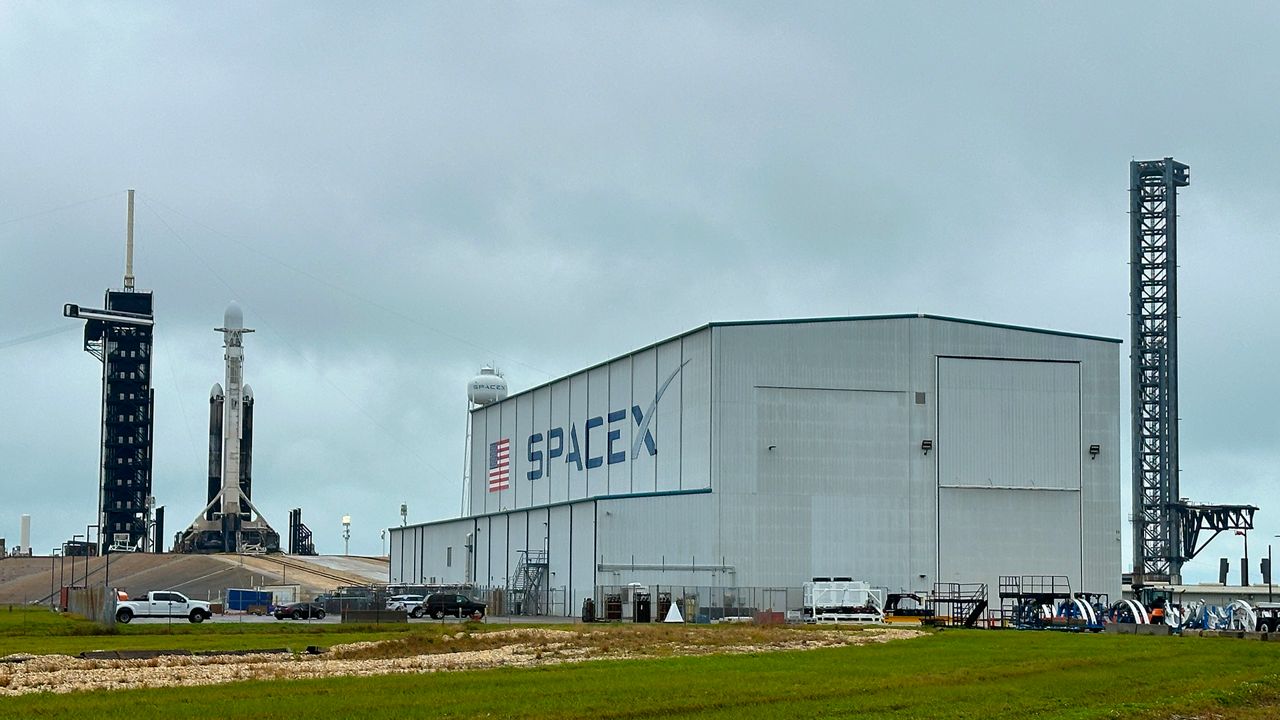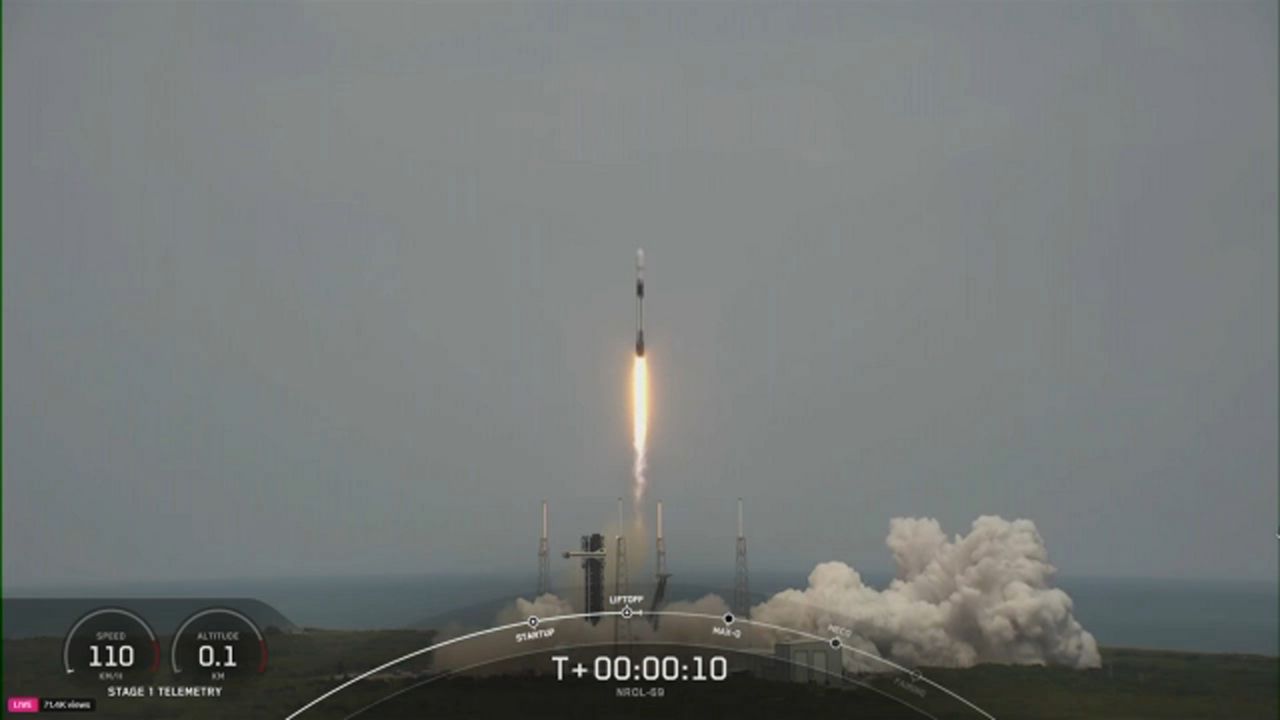CAPE CANAVERAL SPACE FORCE STATION — A series of environmental public meetings will be held as SpaceX has announced interest in expanding its Starship-Super Heavy launch and landing operations to Cape Canaveral Space Force Station.
What You Need To Know
- SpaceX officials have said the company is interested in expanding its Starship-Super Heavy launch and landing operations to Cape Canaveral Space Force Station
- Public meetings will be held to discuss environmental impacts of SpaceX’s proposals for new launch structures and plans
- The first of these meetings will be held Tuesday at 4 p.m.
- Scroll down to learn more about Starship's history and possible future
The meetings will focus on the environmental impacts of SpaceX’s proposals for new launch structures and plans.
In the latest proposal, SpaceX has released three options for its Cape Canaveral Space Force Station plans. The first would involve SpaceX either modifying, reusing, or demolishing the existing Space Launch Complex (SLC) 37 infrastructure to support Starship-Super Heavy launch and landing operations.
SLC 37 is currently in operation by ULA, which will be launching is last Delta IV Heavy later this year, thus ending all launches from the pad.
An alternative option would be constructing infrastructure to support Starship-Super Heavy launch and landing operations on an undeveloped portion of land that has been set aside and designated for a future Space Launch Complex-50. SLC-50 would be between SLC-40 and SLC-37.
A non-action alternative is also available where SpaceX would not develop a launch and landing site in support of Starship-Super Heavy launches and would not apply for an FAA vehicle operator license for Starship-Super Heavy launches from CCSFS.
The Department of the Air Force will prepare an Environmental Impact Statement (EIS) to assess this project's potential environmental impacts. The National Environmental Policy Act requires federal agencies to assess anticipated environmental impacts of their proposed actions, disclose their findings to the public, and solicit public input on their proposals.
There are four meetings scheduled, three in person and one virtual.
Tuesday, March 5, 2024
- 4 p.m. to 7 p.m.
- Catherine Schweinsberg Rood Central Cocoa Library
- 308 Forrest Ave., Cocoa, Fla., 32922
Wednesday, March 6, 2024
- 4 p.m. to 7 p.m.
- Titusville Civic Center
- 4220 S Hopkins Ave., Titusville, Fla., 32780
Thursday, March 7, 2024
- 4 p.m. to 7 p.m.
- Radisson Resort at The Port
- 8701 Astronaut Blvd., Cape Canaveral, Fla., 32920
Virtual Meeting (No Link Provided Yet)
- Tuesday, March 12, 2024
- 6 p.m.
The meetings will give the public a chance to review and comment on the proposed action and potential environmental impacts. Public scoping is conducted in the initial stages of EIS development to solicit comments from the public and agencies about potential issues that should be analyzed in the EIS.
This could include resource areas that may be affected by the proposed action, impacts from past or ongoing projects, sufficiency of alternatives being considered, and study areas being evaluated.
More information on the proposal and public hearings can be found on the project's website.
The public is encouraged to submit comments by March 22, to be considered within the public input portion of the draft environmental impact statement.
What is the Starship spacecraft and the Super Heavy rocket?
Starship is a two-stage heavy lift launch vehicle that will be a fully reusable transportation system that has the capability to carry cargo and crew into Earth’s orbit, the moon, Mars and beyond.
Starship is currently the world’s most powerful launch vehicle ever to lift off.
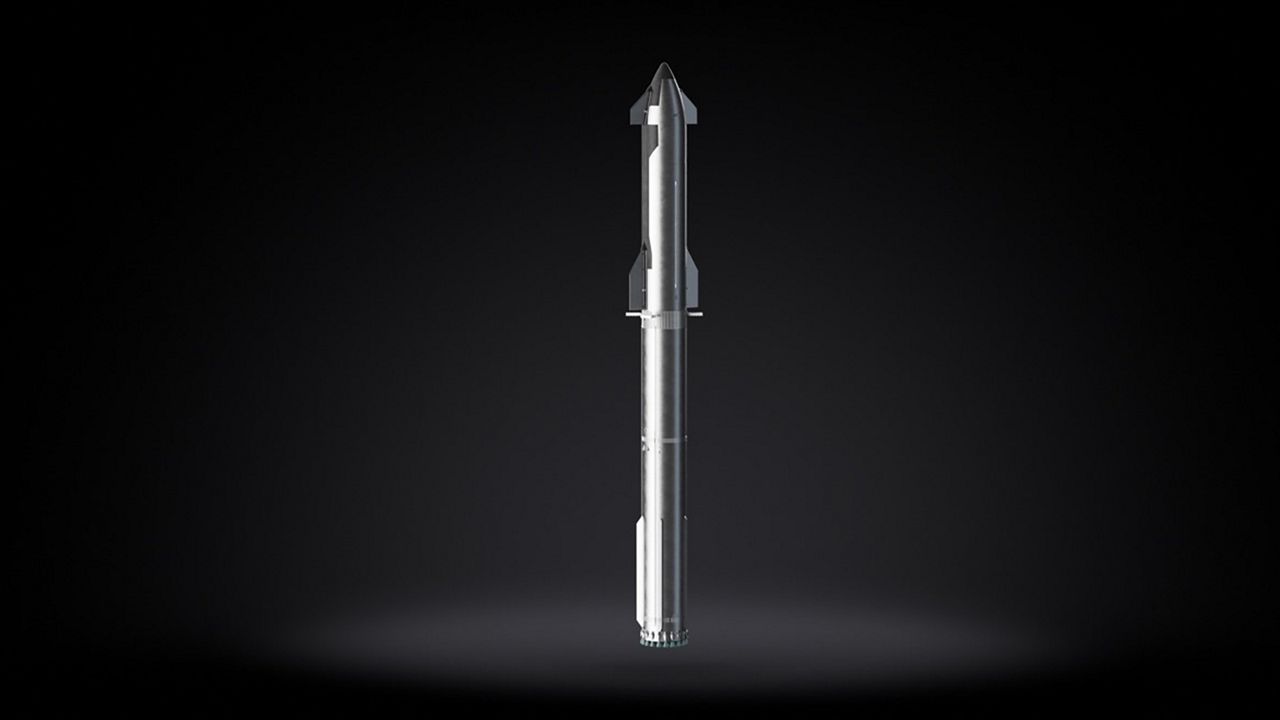
The first stage is the Super Heavy, a booster, that will send the Starship spacecraft into orbit. The booster stands at 232 feet (70 meters) tall and is 29.5 feet (8.9 meters) in diameter. The booster will be powered by 33 Raptor engines, which will create a combined thrust of more than 16,700,000 pounds.
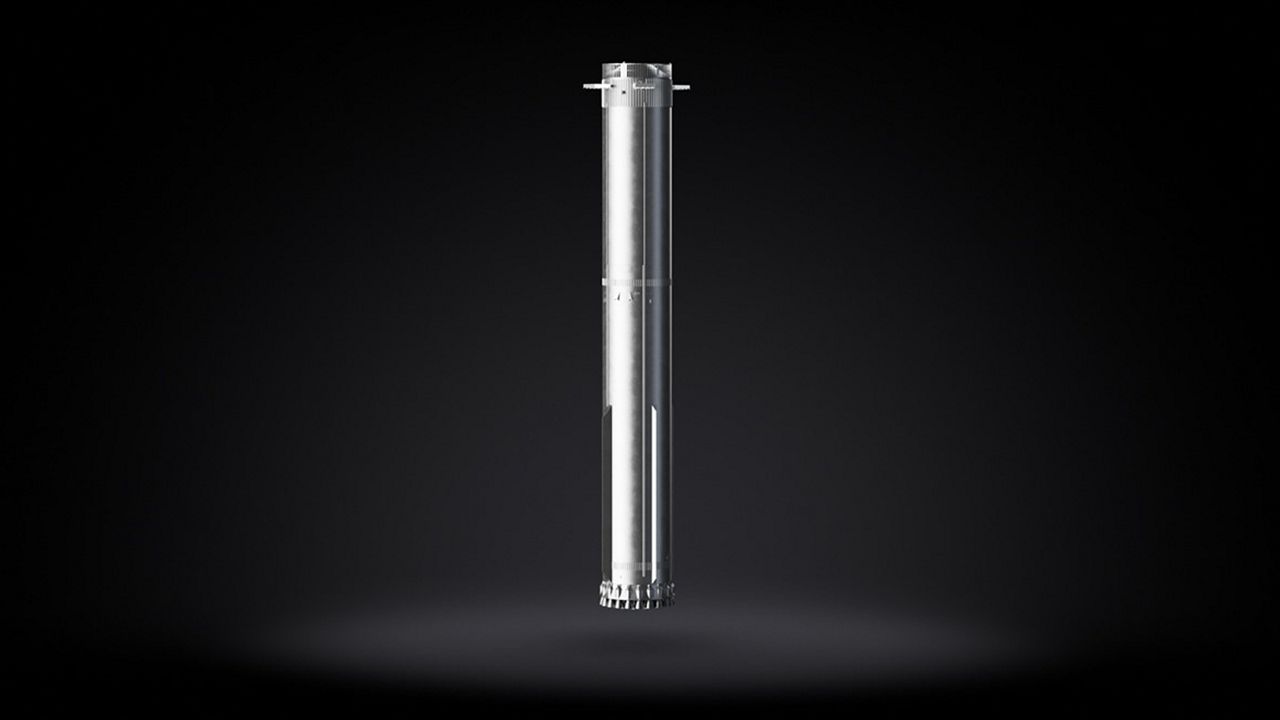
Starship, the second stage, is currently being designed and flight tested as a fully reusable transportation spacecraft system that will have the capability of carrying up to 100 crew members and cargo for short- and long-duration flights from Earth to the moon and Mars. NASA has also selected Starship as the initial Human Landing System that will be taking astronauts down to the surface of the moon during the Artemis III and Artemis IV missions.
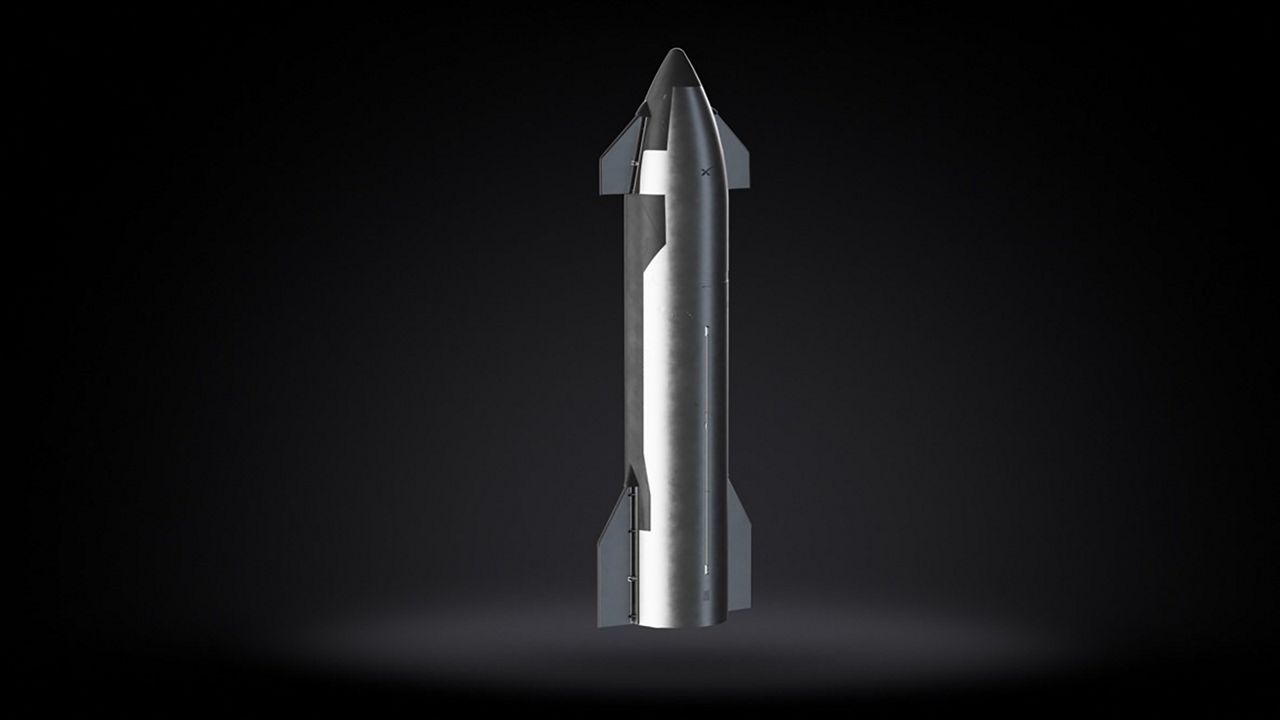
Starbase, Boca Chica Texas
Current Starbase operations are taking place in Boca Chica, Texas, where SpaceX is manufacturing and continually developing Starship. Since 2020, SpaceX has performed numerous sub-orbital test flights and began its first orbital flight test in April of 2023.
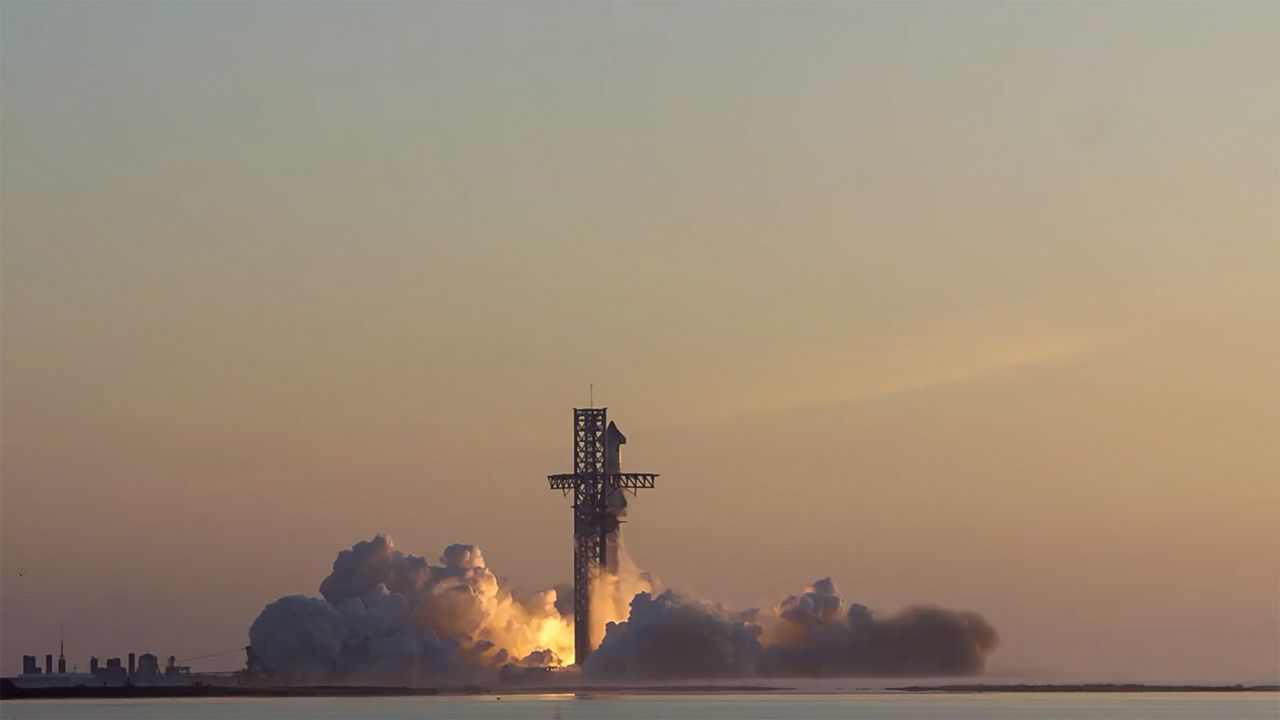
SpaceX has held two orbital flight tests, which both ended in self-destruction. Work is currently underway as SpaceX is preparing for its third orbital flight test of the Starship spacecraft.
SpaceX CEO and founder Elon Musk says the launch site in Boca Chica will continue to be SpaceX’s Starship location for advanced research and development of newer versions of the rocket, and the Cape Canaveral Space Force Station and Kennedy Space Center would be the main operational launch sites.
In mid-February, SpaceX received segments for a second Starship launch tower to be built at the Boca Chica launch site.
Kennedy Space Center
SpaceX currently operates at Launch Complex 39A (LC-39A) at Kennedy Space Center, where it launches its Falcon 9 and Falcon Heavy rockets from the same pad where NASA launched many of its Apollo and Space Shuttle programs from.
Back in 2019, SpaceX received an Environmental Assessment approval by the Federal Aviation Administration and proposed to expand its launch operations at LC-39A to include the Starship/Super Heavy program.
Construction at Launch Complex 39A would include a near completed orbital mount, launch tower with two mechanical robot arms to be able to lift and stack both the Starship and Super Heavy booster for integration head of its flight. Post flight, the arms would be used to catch the booster that would be returning to the launch site to be re-stacked and prepared for its next flight, assisting SpaceX with its goal of rapid reusability.





